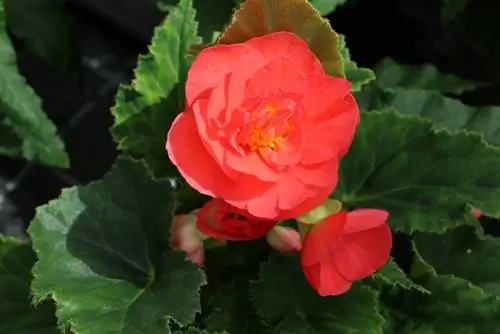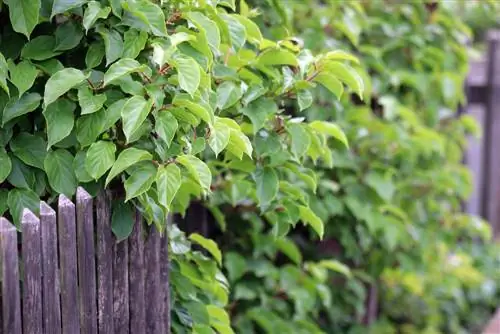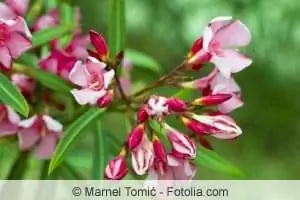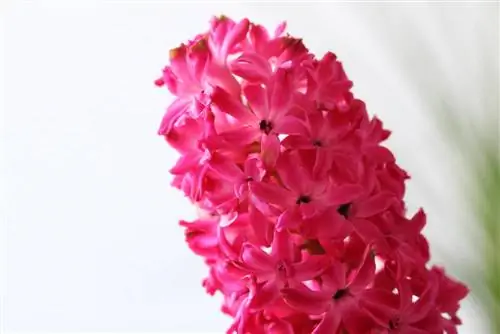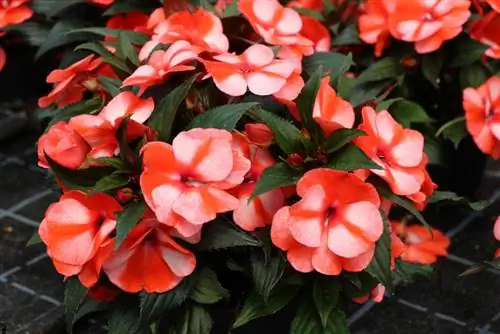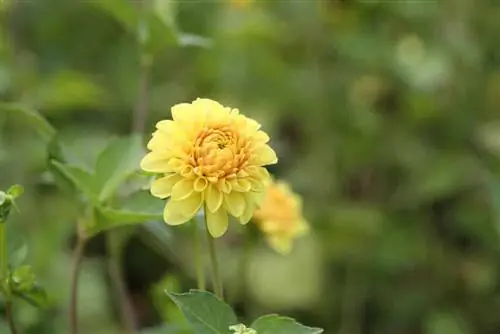- Author admin [email protected].
- Public 2023-12-17 03:39.
- Last modified 2025-01-24 12:45.
The ideal location for the lushly blooming tuberous begonias is in a pot on the terrace or balcony, but they also feel at home in the garden bed and on the windowsill. Their ability to bloom does not decrease even in less good lighting conditions, so the tuberous begonias are particularly suitable for a shady location. If you want a bright variety of colors in your garden or on your terrace and balcony, you are on the safe side with this easy-care plant.
Plants
Bugonias are replanted in spring after the last frost. There are two options for this: the tubers have already been planted in another location or they can be planted directly in their final location without being planted. The begonias without forcing are planted as follows:
- To avoid waterlogging, create drainage, in the bed as well as in the bucket
- Place a layer of pottery shards or gravel in the bucket above the drainage hole
- Plant fleece goes over this before the soil is filled in
- Dig the planting hole deep enough in the bed and add a layer of gravel or stones for better drainage
- Place earth over it again
- dig small hollows into which the tubers are inserted
- make sure that the shoot points upwards
- Do not cover the tubers with soil, just fill in the soil halfway around them
- water moderately and fertilize regularly
Tip:
Bugonias cannot tolerate frost, so the ideal time to plant them outside is May after the Ice Saints, because on these days it can still be very cold at night with frosty temperatures. It therefore makes sense to advance the tubers and then plant them out, so the hobby gardener can enjoy abundant flowers more quickly.
Advance
Ideally, tuberous begonias are planted in February or March so that they bloom earlier and more abundantly in the summer. The new eye shoots can usually already be seen on the bowl-like top of the tubers. These must point upwards. Driving the tubers is easy, proceed as follows:
- fill sufficiently large pots with soil
- The commercially available balcony potting soil can be used, which is mixed with sand
- Place begonia tubers in the pot with the shoots facing upwards
- Only cover the tubers halfway with soil so that the shoots can still be seen
- look for a bright, not too sunny and warm place as a location for the pots
- The window sill in a living room is suitable for this
- Another ideal location is a heated winter garden
- leave the pots in this warm place until May
- plant in May after the Ice Saints in the final summer location on the balcony, terrace or garden bed
Tip:
When planting, warmth from below is ideal for the tuberous begonias at the beginning, so a place above a heater can also be chosen for the first time. However, it should be borne in mind that the soil dries out more quickly from below.
Location & Care
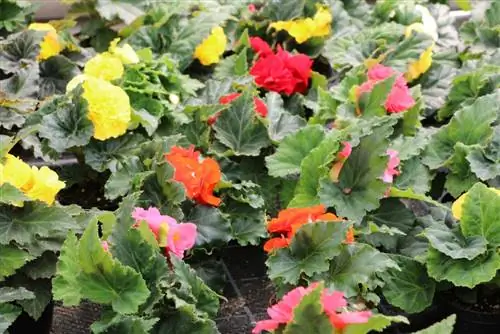
Bugonias prefer a shady or semi-shady place, but can also stand in the morning or evening sun for a few hours a day. However, it shouldn't get too hot, so don't choose a location with blazing midday sun. The flower should also be protected from the wind, as strong winds could damage the large flowers. Otherwise, the tuberous begonias require the following care:
- nutrient-rich, loose and water-permeable soil, ideally enriched with sand
- Avoid waterlogging, do not leave water in the saucer or a planter
- water moderately, it's better to keep it a little drier than too wet
- only water from below, directly at the tuber, leaving out the leaves and flowers
- Use liquid fertilizer for flowering plants for abundant flowering
- pay attention to the manufacturer’s instructions for dosage
Tip:
Start preparing for overwintering in August and water the begonia less until September and stop fertilizing now before watering should be stopped completely in September.
Wintering
Since tuberous begonias are not hardy, they must be protected from the first frost. The tubers cannot tolerate even light frost and can die. If the tuberous begonias were cultivated in a small pot, then it is sufficient to move it inside and thus have a decorative flowering plant on the windowsill in winter. For all other begonias, the following should be noted before winter:
- don't water from the end of September
- Let the soil around the tuber dry out
- If the begonia's foliage has withered, the tuber is dug up before the first frost
- Let the tuber dry and remove plant residues and soil
- provide an air-permeable box with dry sand
- The tubers are placed here
- Store in a dark, dry and cool place, for example in an unheated basement or garage
- Temperatures of 5° to 7° Celsius are ideal here
Tip:
Before the begonia tubers are moved to their winter location, they should be inspected for possible pest infestation or rot. If parts of the plant are affected, remove them. Otherwise, the tubers will suffer further damage over the winter and, in the worst case, will no longer sprout next year.
Propagate
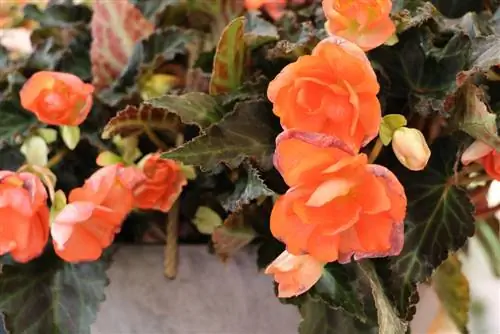
After winter, if desired, the tubers can also be propagated in order to get even more flowers on the terrace and balcony. To do this, proceed as follows:
- Determine the shoot eyes, if necessary clean the tuber with a soft brush
- if no shoot eyes are visible, keep them warm so that the tubers can bud
- Nuts can be divided into up to eight pieces
- each new tuber obtained in this way needs at least one shoot eye
- then push or plant the new tubers
Tip:
So that the begonia tubers are not damaged after division, roll them in coal dust before placing them in the ground. This is how the wounds at the interfaces are closed.
Conclusion
The easy-care tuberous begonia is also the perfect solution for hobby gardeners without a lot of time to immerse their terrace, balcony or garden in a colorful sea of flowers. Besides water and a little fertilizer, the decorative flower doesn't need much. Every now and then the withered leaves and flowers should be removed. However, since tuberous begonias are not hardy, the tubers must be dug up in the fall before the first frost and placed in a warm, dry place. Since they are not picky about their location, they are particularly suitable for shady or semi-shady balconies and terraces where not many flowers otherwise grow.

